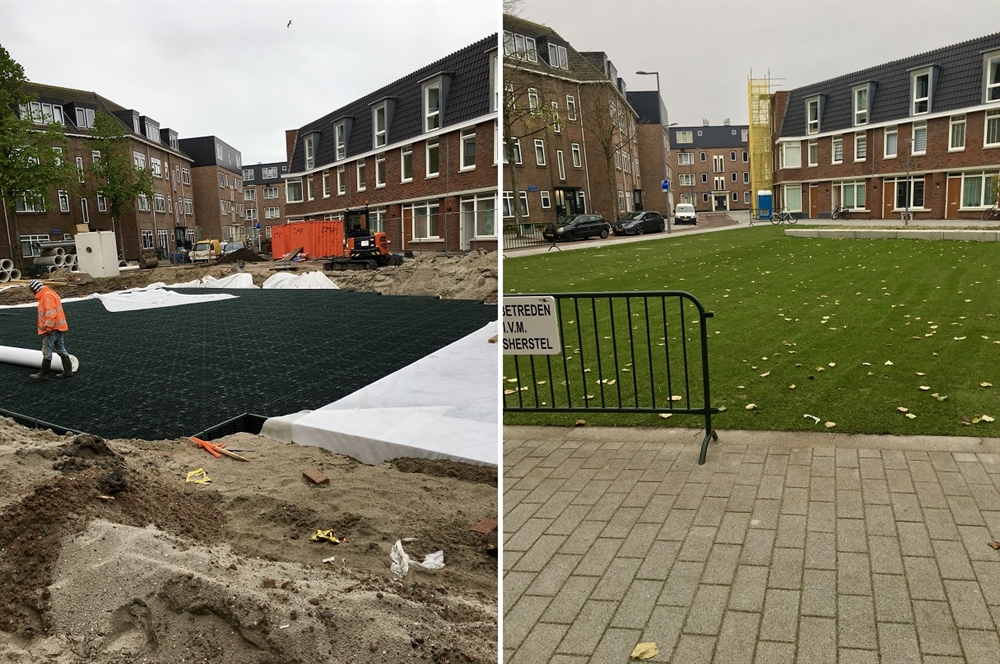Water storage underneath green square in Staringbuurt district
In the Staringbuurt district in Rotterdam, severe downpours and extreme drought are causing increasingly more problems. In order to resolve the problems in one go, the municipality and the Woonstad housing corporation have joined forces. The result is a large, green square featuring a system to retain local rainwater.
What has prompted the project?
The houses and the outdoors in the Staringbuurt district were due for a makeover. The municipality intended to redesign the district. As many of the houses are owned by the Woonstad housing corporation, the municipality and Woonstad launched a concerted redevelopment project. Some houses were renovated, others were replaced by newly built ones. The outdoors was also addressed. Woonstad was responsible for the project management and ran the entire project. The municipality provided the designers, consultants, and engineers to plan the outdoors.
What adaptation measures have been implemented?
The municipality and Woonstad have collectively explored which measures would be effective to resolve the waterlogging and drought issues in the Staringbuurt district. They have taken measures near the new houses and on the Staringplein square. The square has been given a green look, with a large lawn amidst the houses. Trees and plants will be planted in the corners of the field. Neighbourhood children can play on the grass. The field appears to be an ordinary stretch of grass, but underground it harbours a large water storage provision. The water collection system consists of two layers of plastic crates, separated by 10 cm of sand. If it rains, water from the rooftops, streets, and paths will flow to the water system. The municipal authorities (and Woonstad) are responsible for the management and maintenance of the water collection system. The management programme encompasses an annual inspection, and if need be, the crates will be cleaned.

Image: Renovation of the Staringplein square: the crate system (left) and the lawn (right).
How will the water storage combat waterlogging and drought?
Pipes will direct the rainwater that falls on the paths surrounding the square to the upper layer of crates. The water will be retained in this layer, thus enabling the vegetation roots to access the rainwater. This prevents dehydration of the greenery. The rainwater that falls on the rooftops of the new houses and on the surrounding streets will flow to the bottom layer of crates, where it is initially stored. Subsequently, it will infiltrate into the soil. This prevents waterlogging and concurrently replenishes the groundwater, thus combating drought. If the crate system should fill up during a severe downpour, the excess rainwater will flow into the sewer system.
How well does the water storage work?
The municipality is monitoring groundwater levels and will analyse the operation of the water storage facility annually. The information is provided by “data loggers”: measuring instruments that register groundwater levels at special groundwater gauging stations on and around the square.
Lessons to be learned
‘Confidence and a clear collective goal are the main conditions for efficient collaboration’ – staff member, Woonstad housing corporation
‘By now, the tasking has become too large and comprehensive to be tackled by individual parties. There is no point in adapting rental homes and some public space separately. Furthermore, in many cases, in addition to climate issues, a district will also be faced with, e.g., social issues. Finding appropriate solutions will require us to utilise each other’s expertise and skills.’ – staff member, municipality of Rotterdam
Contact person
B.C. de Wildt
Gemeente Rotterdam
Bc.dewildt@rotterdam.nl
